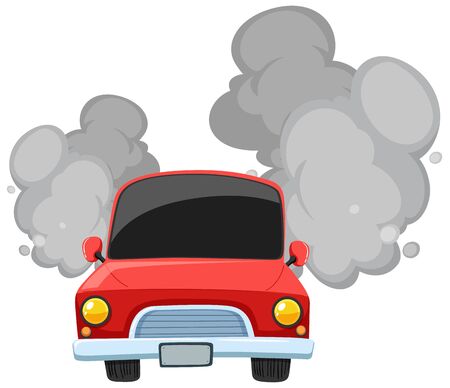Understanding Flash Flood Risks on the Road
Flash floods are a sudden force of nature that can turn an ordinary drive into a dangerous challenge in the blink of an eye. Across America, from the winding backroads of the Midwest to the bustling freeways of the South, flash floods strike with little warning. These floods happen when intense rainfall overwhelms drainage systems or when rivers and creeks swell beyond their banks, often after just a few minutes or hours of heavy downpour. In towns and highways across the country, this can mean streets submerged under water, leaving drivers caught off guard.
Unlike regular flooding, flash floods develop rapidly—sometimes within six hours or less after rainfall begins—giving little time to react. In many American communities, urban sprawl and paved surfaces prevent water from soaking into the ground, funneling it onto roads instead. For drivers, this poses unique dangers: hidden washouts, powerful currents, and debris lurking beneath murky waters all threaten safety. Understanding how fast these conditions can change—and why—is essential for anyone behind the wheel during storm season.
2. What to Do Before Hitting the Road
When flash flood warnings light up your phone or radio, a little bit of classic American preparedness can make all the difference before you even start your engine. Whether youre in a vintage Chevy or a modern SUV, its always smart to check the latest weather updates before heading out. Tune into trusted local news stations or set up alerts on your smartphone—old-school and new tech working together for your safety.
Stay Informed with Weather Alerts
Before you drive, make sure youre aware of any storm warnings or flood advisories in your area. Signing up for emergency notifications from the National Weather Service (NWS) or using weather apps can help you stay ahead of sudden downpours and road closures. Remember, American roads can change fast during heavy rainstorms, especially in low-lying or rural areas.
Plan Alternate Routes
Map out more than one route to your destination. Even if youve driven the same stretch of highway for decades, flooding can turn familiar roads into dangerous traps. Use navigation tools like Google Maps or Waze, which often update in real-time with road closures and hazards, but dont forget the value of a good old-fashioned paper map as backup—technology isnt always foolproof when storms knock out power or cell service.
Quick Reference: Route Planning Table
| Step | Modern Approach | Classic Backup |
|---|---|---|
| Check road conditions | Navigation apps (Google Maps/Waze) | Local radio updates |
| Select alternate routes | GPS rerouting | Paper maps/Atlas |
Pack an Emergency Kit
A well-stocked emergency kit is as essential as a full tank of gas. Before you hit the road, stash these classic must-haves in your trunk:
- Bottled water and non-perishable snacks
- First aid kit
- Flashlight with extra batteries
- Blanket and rain poncho
- Portable phone charger
- Basic tools (screwdriver, pliers, jumper cables)
If you’re traveling with family or pets, be sure to pack extra supplies tailored to their needs. Taking these practical steps before driving doesn’t just keep you safe—it’s part of the enduring American tradition of looking out for yourself and others when Mother Nature throws a curveball.
![]()
3. Recognizing Flooded Roads and Hazard Signs
Out on the open road, sudden flash floods can turn a familiar route into a landscape of hidden dangers. Knowing how to recognize visual indicators of submerged roads is essential for safe passage. Look for unusual ripples or reflections across the asphalt—these may signal water covering the roadway, even if it appears shallow. When approaching an area after heavy rain, pay close attention to debris like tree branches, mud, or even household items swept up by strong currents. These are telltale signs that water has already passed through and may return.
Spotting Downed Power Lines and Obstructions
Floods often bring down power lines, which can be nearly invisible in murky water or dim evening light. Treat any fallen wires as live and extremely dangerous; never attempt to cross a flooded area where lines are present. Likewise, watch for floating debris—anything from garbage cans to fence posts—that could strike your vehicle or block your path, especially at night or in poor visibility.
The Importance of Road Closure Signs
No matter how urgent your journey feels, always heed road closure signs and barriers. These warnings aren’t just suggestions—they’re placed by first responders who know the risks ahead. Even classic American grit should bow to these barricades: Turn around, don’t drown. Ignoring posted warnings puts both you and emergency personnel at risk. Remember, a little patience now keeps you safe for many more journeys down the road.
4. How to Respond if You Encounter Flooded Roads
When you’re out on the road and suddenly see water covering your path, it’s time to put safety above all else. Flash floods can turn familiar streets into dangerous traps in a matter of minutes. Here’s a clear, step-by-step guide to help you make smart decisions—remembering the classic American slogan: Turn Around, Don’t Drown.
Step-by-Step Actions for Flooded Streets
| Step | What To Do | What Not To Do |
|---|---|---|
| 1 | Stop your vehicle at a safe distance from the water—never rush forward. | Don’t assume your car can handle it or that the water isn’t deep. |
| 2 | Look for posted warning signs or barricades and always obey them. | Never drive around barriers or ignore road closures—they’re there for a reason. |
| 3 | If there’s any doubt about depth, turn around and find another route. | Avoid “testing” the water; even six inches can cause loss of control. |
| 4 | If caught between rising waters, abandon your vehicle and move to higher ground if it is safe to do so. | Don’t stay inside a flooding vehicle unless moving is more dangerous. |
| 5 | Call 911 if you need assistance and wait for emergency services. | Do not attempt to walk or swim through moving floodwaters. |
The ‘Turn Around, Don’t Drown’ Rule
This iconic phrase sums up decades of hard-learned wisdom: If you see water over the road, don’t risk it—find another way home. It only takes a foot of water to carry away most cars, and even less for smaller vehicles. No destination is worth putting your life on the line. Take a detour, call ahead if you’ll be late, and let loved ones know you’re safe. In moments like these, classic American caution and community spirit shine brightest—when in doubt, turn around and stay safe.
5. Staying Safe if Youre Trapped in Floodwaters
Sometimes, even the most cautious drivers can find themselves unexpectedly surrounded by rising floodwaters. In these rare but critical moments, quick thinking and calm action can make all the difference. Here’s what you need to know—and do—if your vehicle becomes trapped.
Assess the Situation
First, don’t panic. Take a deep breath and quickly evaluate your surroundings. Is water entering the car? How fast is it rising? Your next steps depend on how much time you have before conditions become life-threatening.
If Water Is Just Starting to Enter
If the water level outside is low and rising slowly, keep your seatbelt on and attempt to drive out only if the path ahead is clear and the water isn’t moving swiftly. However, never attempt to drive through more than a few inches of water; it’s easy to underestimate its power. If escape by driving is not possible, switch off the engine to avoid electrical hazards.
If Water Is Rising Rapidly
As soon as water starts rushing in or if your car stalls in deep water, unbuckle your seatbelt and instruct any passengers to do the same. Roll down or break a window immediately—power windows may still work for a short period after stalling. If windows won’t open, use a window-breaking tool (always keep one handy in your glove box or center console). Don’t waste precious seconds trying to open doors against heavy water pressure; they’re nearly impossible to move until water levels inside and outside are nearly equal.
Exiting the Vehicle Safely
Once you have an exit point, leave the vehicle as quickly as possible. Climb onto the roof if you can’t reach dry land safely. Avoid walking or swimming through moving water; just six inches of fast-moving floodwater can knock you off your feet, and two feet can sweep away vehicles.
When to Call for Help
If you’re unable to escape, call 911 right away and give your exact location. Turn on hazard lights and honk your horn periodically to alert rescuers. Stay calm—help is on the way.
Classic Wisdom for Modern Drivers
Remember: possessions can be replaced, but lives cannot. Abandon your car when it’s no longer safe—don’t try to save valuables. The golden rule remains: Turn Around, Don’t Drown®—but if caught off-guard, these steps will help keep you and your loved ones safe until help arrives.
6. After the Flood: Next Steps for Drivers
The storm has passed, and the floodwaters are finally receding. But before you breathe a sigh of relief and get back on the road, it’s important to remember that some of the greatest dangers can linger after a flash flood. Here’s what every driver should keep in mind to stay safe and protect their vehicle once the water clears.
Inspect Your Vehicle for Flood Damage
Once its safe to return to your car, give it a thorough once-over. Start by checking for obvious signs of water intrusion—look at the carpets, seats, and trunk for dampness or mud. Pop the hood and inspect the engine bay; water lines or debris can signal trouble. If your car was submerged or even just splashed heavily, dont start it right away. Water inside the engine or electrical system can cause serious—and expensive—damage. Instead, have a trusted mechanic perform an inspection before hitting the road again.
Be Alert for Hidden Hazards
Floods can turn familiar roads into minefields of danger. Potholes may have formed under standing water, and washouts can make pavement collapse without warning. Downed power lines, scattered debris, and weakened bridges are all possible in the aftermath of a flood. Drive slowly and cautiously, avoiding any areas where water remains pooled or where the road surface looks uneven or cracked.
Avoid “Flood-Damaged” Shortcuts
Even if you know a shortcut home, don’t be tempted to drive through areas that were heavily flooded until authorities give the all-clear. These roads may look passable but could conceal sinkholes or other hazards beneath their surface—a classic case of “better safe than sorry.”
Report Dangerous Conditions
Your local community depends on drivers like you to help keep everyone safe after severe weather. If you spot hazardous conditions—such as missing road signs, large debris, impassable stretches, or damaged infrastructure—report them to your city or county’s non-emergency hotline or use local apps designed for this purpose. Prompt reporting helps public works crews act fast and prevents further accidents.
Stay Vigilant and Share Information
Finally, keep an eye on updates from local news and transportation authorities as they assess road safety in your area. Sharing reliable information with neighbors and friends not only keeps your community safer but also brings back that sense of camaraderie Americans have always cherished in tough times.
In the end, a flash flood is just another chapter in life’s unpredictable story. With care, patience, and a little classic common sense, you’ll be back on the open road before you know it—safe and sound.


